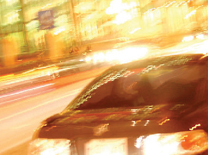Now that you’re a parent, you have not only your own safety to think of, but that of your children. Some things cannot be avoided, but do what you can to prevent a road accident from harming or killing your child.
-
Safety seats.
In case an accident occurs, nothing can keep your children as safe as a properly fitted and installed child safety seat will. These seats may make the difference between life and death. There are different types of seats for children of different ages and sizes so make sure you buy the right seat for your child. Infant seats are for infants up to 12 months old (or who weigh 10 kg) and are fitted facing the rear of the car. Convertible car seats are for children aged between 1 and 4 years and can be installed either forward- or rear-facing, depending on the child’s weight. Booster seats are for children aged 4-10 years old or who weigh between 18 kg and 22 kg. These seats raise children to a height at which it’s safe for them to use the adult seat belts. If you are not sure what seat to buy, ask your paediatrician.
-
Buckle up.
Do it for yourself; do it for the children, too. As stated in the previous point, young children must be placed in car seats. If your child has outgrown the booster seat, he is now tall enough to use the adult seat belt in the back seat. No child under 12 should sit in the front passenger seat. At all times, ensure that driver and all passengers are safely buckled up.
-
Keep to the speed limit.
Don’t succumb to the temptation of speeding. If it is raining, visibility will be low and you may need to drive a little slower to give you more time to recover in case you come across obstacles on the road such as fallen tree branches and stalled cars.
-
Stay alert.
Take a break at least once an hour by pulling into a highway rest stop. If you feel sleepy, take a 15- to 30-minute nap. Stopping frequently will also give children the chance to stretch their legs, which will prevent restlessness and consequent grumpiness. If possible, take turns at the wheel with your spouse or other travelling companions who have valid driving licences.
-
Watch out.
If others on the road are driving dangerously or recklessly, keep your distance from them. If you turn into a rest stop to get away and they follow you, do not get out of your vehicle! Choose bigger rest stops that have more motorists around, and don’t unlock or open the doors if anyone suspicious is loitering near where you’re parked.
-
Lock the doors.
This isn’t only necessary when your car is stationary. If one of you fails to close a door tight, the lock will be able to prevent it from swinging open while you move (to some extent). To be extra sure, walk round the car making sure all doors are closed securely before you get in, yourself. If your car comes with a child lock feature, use it.







Comments